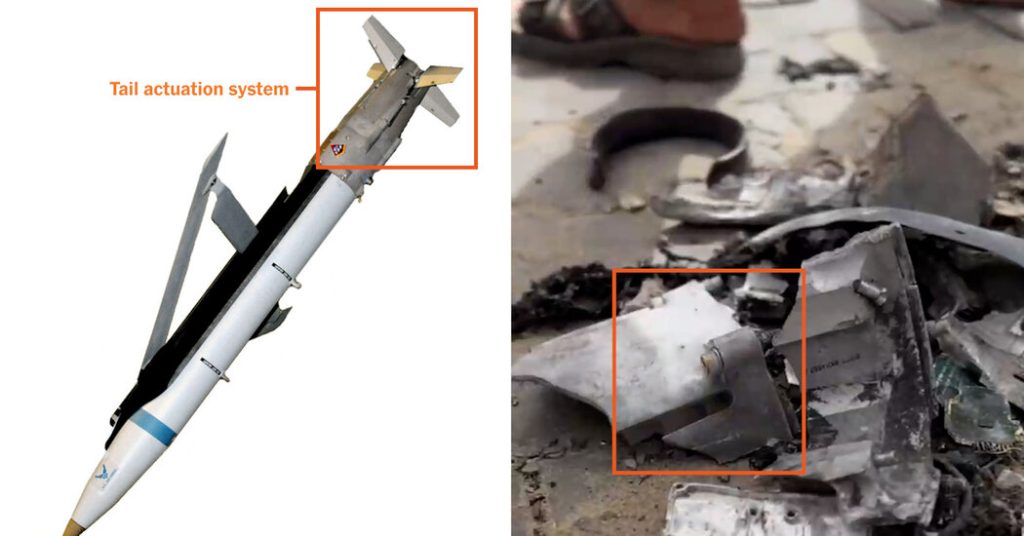The recent Israeli strike that resulted in the deaths of dozens of Palestinians in a camp for displaced people in Rafah utilized bombs made in the United States, according to weapons experts and visual evidence reviewed by The New York Times. The debris found at the strike site was identified as remnants from a GBU-39 bomb, which is designed and manufactured in the United States. U.S. officials have been advocating for Israel to use more of these bombs due to their potential to reduce civilian casualties.
The key detail in the weapon debris was the tail actuation system, which controls the fins that guide the GBU-39 to its target. The fragments found at the site were marked by a unique identifier code assigned by the U.S. government to Woodward, an aerospace manufacturer in Colorado that supplies parts for bombs like the GBU-39. The strike in Kuwaiti Al-Salam Camp 1 resulted in the deaths of at least 45 people and wounded over 240 others, according to the Gazan health ministry.
U.S. officials have been urging the Israeli military to increase the use of GBU-39 bombs in Gaza, as they are considered more precise and better suited for urban environments compared to larger bombs like the 2,000-pound ones routinely used by Israel. President Biden recently announced a pause in the delivery of these larger bombs. The Israeli military stated that the strike in Rafah was conducted using two munitions with small warheads that were suited for targeted strikes, containing 17 kilograms of explosive material.
In response to questions about the munitions used, the Israeli military declined to specify, but the GBU-39 has a net explosive weight of around 17 kilograms. The military claimed that steps were taken to target two Hamas leaders, who were killed in the strike. The aftermath of the bombing showed deadly fires breaking out in the camp, with Admiral Hagari speculating that a secondary explosion may have ignited the fire, possibly due to weapons stored in the area.
Despite the Israeli military’s claims of taking precautions to mitigate civilian harm, questions have been raised by experts. Larry Lewis, a former Pentagon and State Department adviser, noted that surveillance footage showed four people outside the targeted buildings before the strike, raising concerns about the military’s awareness of potential civilian presence. Retired Air Force master sergeant Wes J. Bryant, who has experience with GBU-39 bombs, criticized the strike as indicative of negligence in targeting and safeguarding civilians in densely populated areas.
The video footage captured after the attack showed the extent of the devastation and suffering, with witnesses pulling charred bodies from rubble and flames raging in the background. The use of 37-pound bombs in this strike was seen as an effort to be discreet and precise, according to White House spokesman John Kirby. However, experts and former military personnel have expressed concerns about the potential civilian toll and the effectiveness of precautionary measures taken by the Israeli military. Further investigation into the incident is ongoing.


